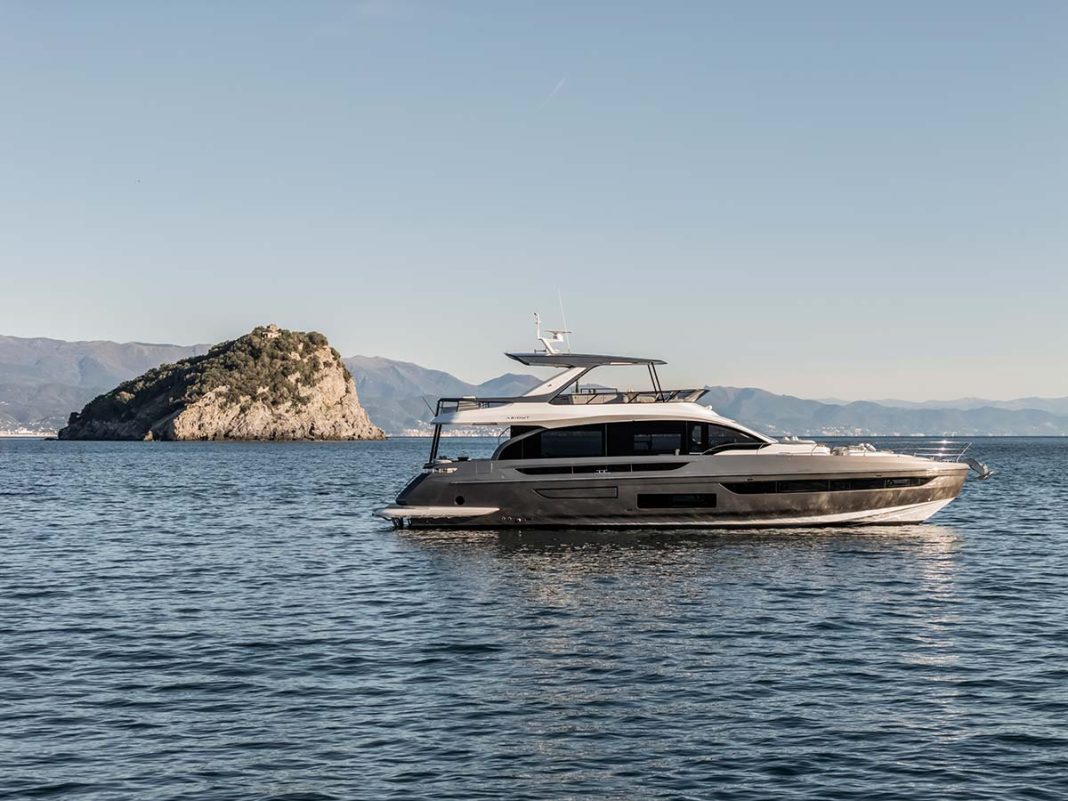DATA SHEET
Hull design: P.L. Ausonio Naval Architecture and Azimut R&D Department
Exterior Design: Alberto Mancini
Interior Design: Fabio Fantolino
Building material: Carbon fibre + VTR/GRP
Overall lenght: m 22,69
Max beam: m 5,62
Cabins: 4 + 1 crew
Engines: 2 X MAN CR V12 1400 mHP
Max speed: up to 31 kn
Cruisibng speed: up to 26 kn
Photos: courtesy of Azimut
The shipyard, founded in 1969 by Paolo Vitelli – part of the Azimut/Benetti Group – is bringing its latest jewel to the sea. The new Fly model from the iconic series from the shipyard based in Avigliana, Italy, marries state-of-the-art design and tradition in an exquisite merging of styles. With a cruising speed of 26 knots and a maximum speed of up to 31 knots, its carbon fiber hull sets the new rules of sailing.
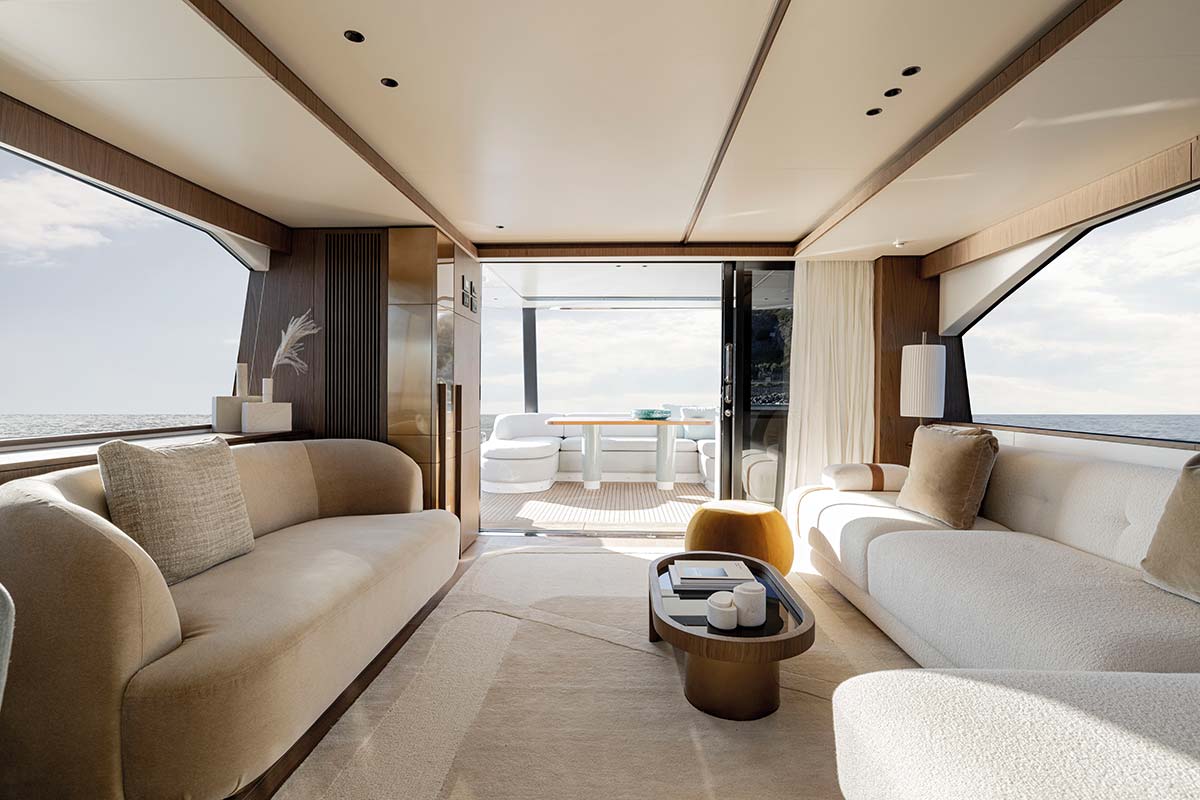
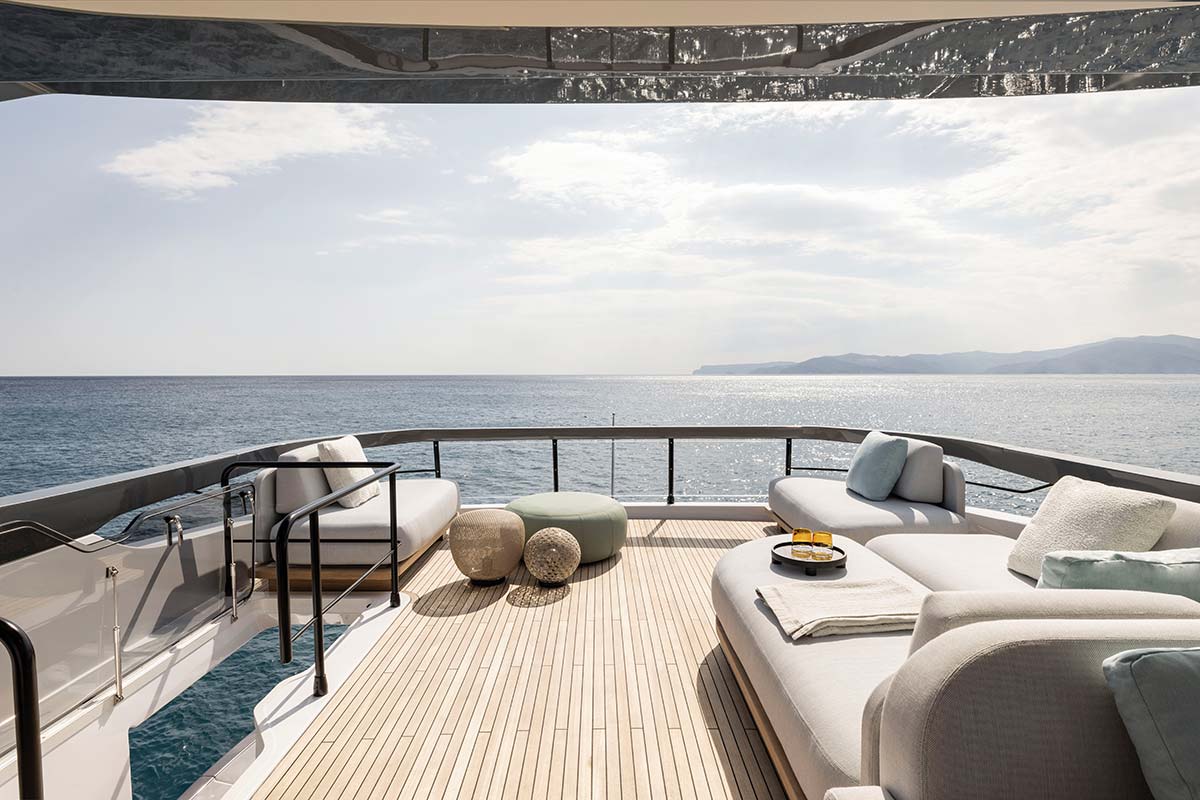
Designed by Alberto Mancini, its spirit is sporty – a clear mark of Azimut yacht’s history – with minimal lines accentuated with sculptural forms, the hallmark of the Fly family models. In everything from the sun lounge near the control platform to the dining table placed next to an American bar, the Fly is designed to emphasize a direct relationship with the sea. The sea can be experienced from open-air spaces at the stern and the spacious, versatile outdoor area, and from the bow in a lounge area with chairs and sun loungers.
In a meticulous design that draws on emblems of the past and the innovative features of contemporary design, the interiors convey an Italian style as seen through the creative vision of Fabio Fantolino. As an architect and designer, he has brought his design sensibility to major hospitality projects and private homes. With his debut in nautical design, he pursued an idea of style harmony between three essential elements – style, design, and technology. The idea crosses the spaces of the Fly 72 with the inspiration of Italian master designers and the works that earned them international fame.
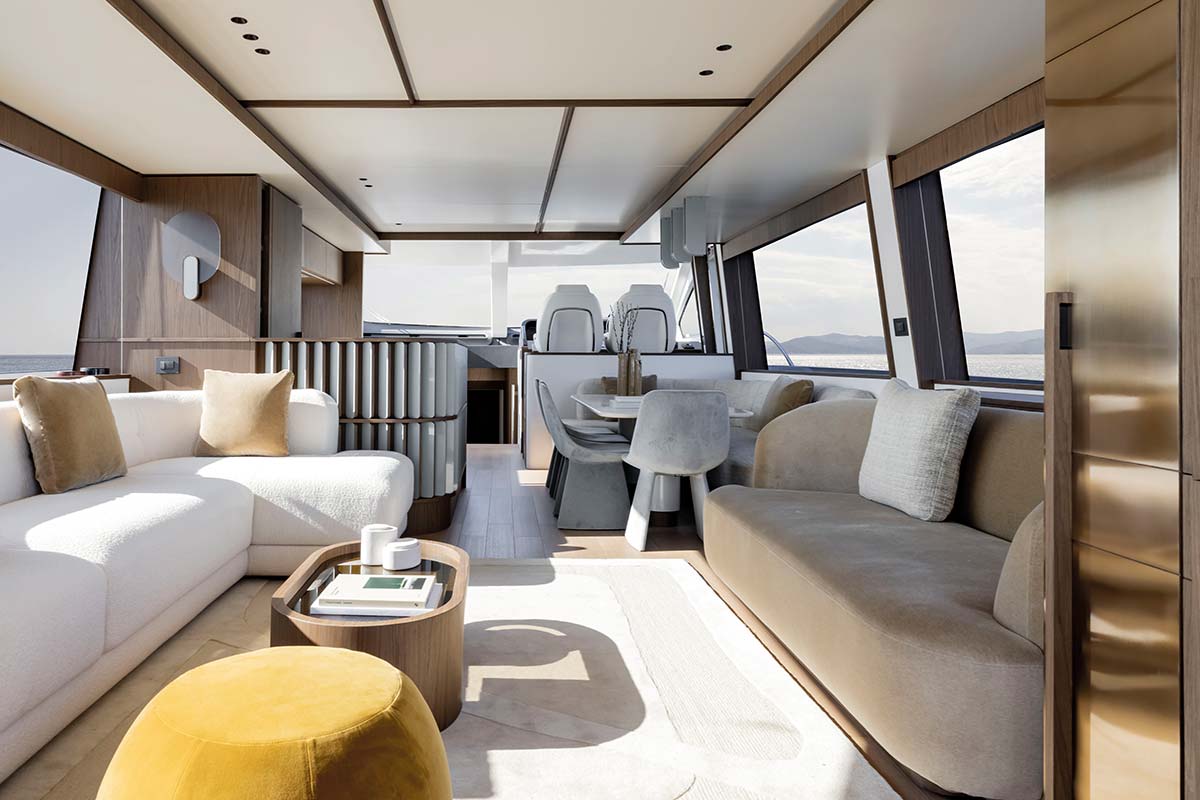
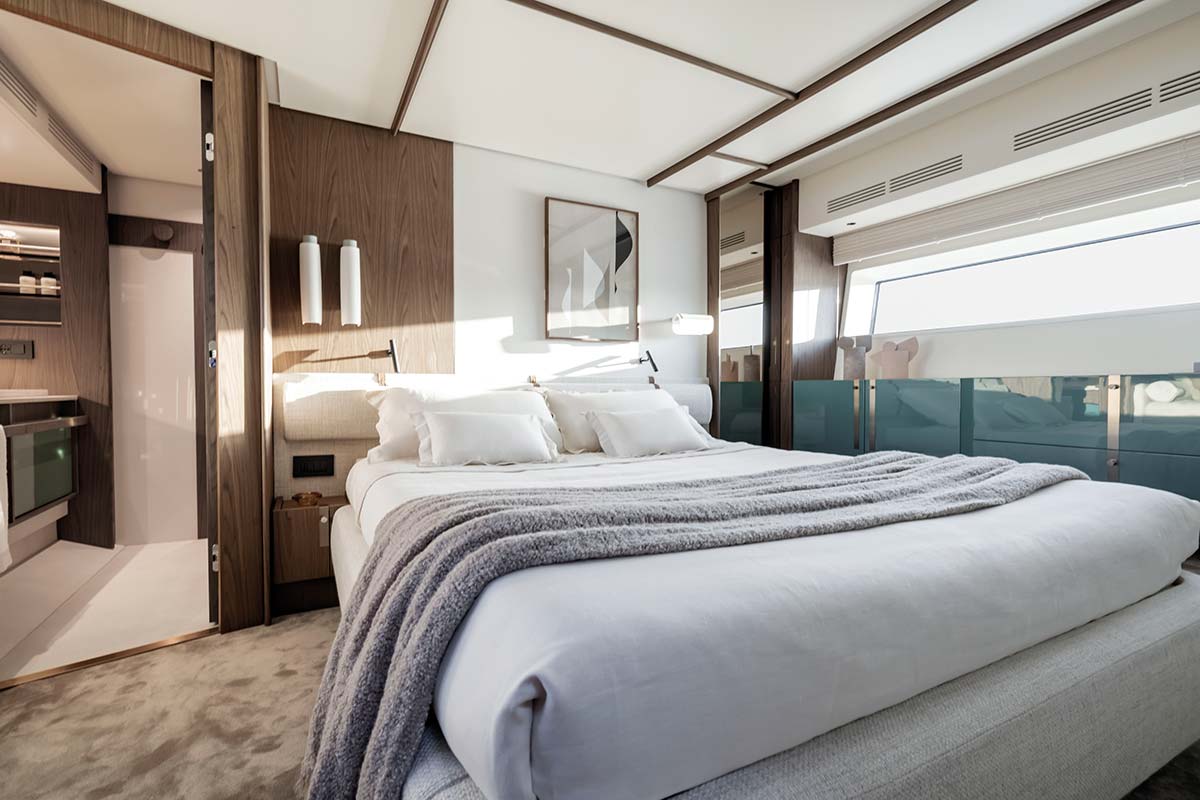
The yacht features careful attention to the choice of fine materials including bronze and polished lacquers combined with wood. Envisioned with asymmetrical elements in pastel colors, and natural, tactile materials, its linear geometric forms, and curving lines are in a perfect balance. The design is traversed by a dialogue between the sophisticated style tenets of nautical design and the refinement of contemporary design.

